Chandrayaan-3 : The Chandrayaan mission series is one such turning point in India’s space exploration quest. In recent years, India’s space programme has advanced significantly, showing its technological strength and scientific accomplishments on a worldwide scale. The Indian Space Research Organisation (ISRO) is preparing for Chandrayaan-3, its third lunar mission, following the success of Chandrayaan-1 and Chandrayaan-2. The specifics of Chandrayaan-3, its goals, its technological developments, and its implications for India’s space programme will all be covered in this artbudgeticle.
Chandrayaan 3 launch date and time
Chandrayaan 3 launch date and time is 14 april 2023, 2.35PM
A Launch Vehicle Mark-3 rocket will be used to launch Chandrayaan 3 from the Satish Dhawan Space Centre in Sriharikota, Andhra Pradesh. Beginning at 2 p.m. IST, ISRO will stream the launch live on its website, YouTube channel, and Doordarshan channel.
Chandrayaan-3 Mission
India’s next lunar mission, Chandrayaan-3, aims to deepen our knowledge of the Moon’s surface and its elements. The mission is a continuation of Chandrayaan-1 and Chandrayaan-2, which made major advancements and made substantial contributions to lunar study.
The following are Chandrayaan-3’s main goals:
Mapping the Lunar Surface:
Chandrayaan-3 will be equipped with cutting-edge instruments to produce detailed maps of the lunar surface, providing important information for further scientific investigations.
Lunar Geology and Mineralogy:
The mission’s primary objective is to investigate the Moon’s geology and mineralogy in order to better understand how it formed and evolved.
Chandrayaan-3’s analysis of the flimsy lunar exosphere will focus on its make-up and changes over time.

Technology Demonstration:
The mission will showcase cutting-edge engineering skills and technology, advancing the space industry.
Important Parts and Tools Chandrayaan-3 is made up of three primary parts:
Improved Lunar Lander: The lander module will be outfitted with state-of-the-art navigation and landing capabilities, allowing for a precise and secure touchdown on the lunar surface.
Upgraded Rover: The rover will be furnished with cutting-edge tools to examine the lunar soil and carry out experiments, generating important scientific information.
Advanced Orbiter: The orbiter will carry out distant sensing and imaging operations while also facilitating communication between the lander-rover module and Earth.
Chandrayaan-3 budget
As per report Chandrayaan-3 budget is approx Rs. 600 cr. , Indian scientists prepared this mission in very minimum cost .
Chandrayaan-3 launch place and launch vehicle
Chandrayaan 3 launch date and time : 14 april 2023, 2.35PM
Chandrayaan 3 launch Place : Satish Dhawan Space Centre in Sriharikota, Andhra Pradesh.
Chandrayaan 3 launch launch vehicle: Launch Vehicle Mark-3 rocket
A Launch Vehicle Mark-3 rocket will be used to launch Chandrayaan 3 from the Satish Dhawan Space Centre in Sriharikota, Andhra Pradesh. Beginning at 2 p.m. IST, ISRO will stream the launch live on its website, YouTube channel, and Doordarshan channel.
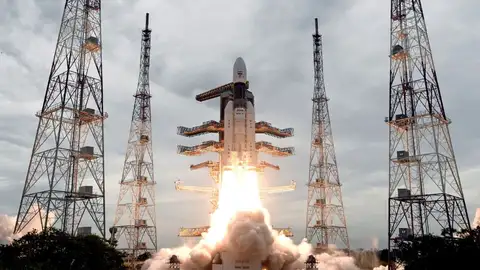
Chandrayaan-3 Purpose
- The main Purpose Chandrayaan 3 is to demonstrate end-to-end landing and roving capabilities by deploying a lander and rover in the highlands near the Moon’s south pole in August 2023.
- Additionally, it will perform a variety of scientific measurements both from orbit and on the ground. It consists of a propulsion module and a lander/rover. Similar to the Vikram rover on Chandrayaan 2, the lander/rover will have upgrades to aid ensure a secure landing.
- The propulsion module, which will remain in lunar orbit and serve as a communications relay satellite, will lift it into lunar orbit.
Chandrayaan 3 lander and rover name
Vikram, which translates to “Valour” in Sanskrit, is the name of the moon lander that is part of the Chandrayaan-3 spacecraft. It is outfitted with four instruments that, among other things, monitor thermal conductivity and detect moonquakes at the landing site.
Chandrayaan-3 Project Director
As per the report, the project director of Chandrayaan-3 will be ‘SF’ P Veeramuthuvel, who will be based at the headquarters of the country’s leading space agency in Bengaluru.
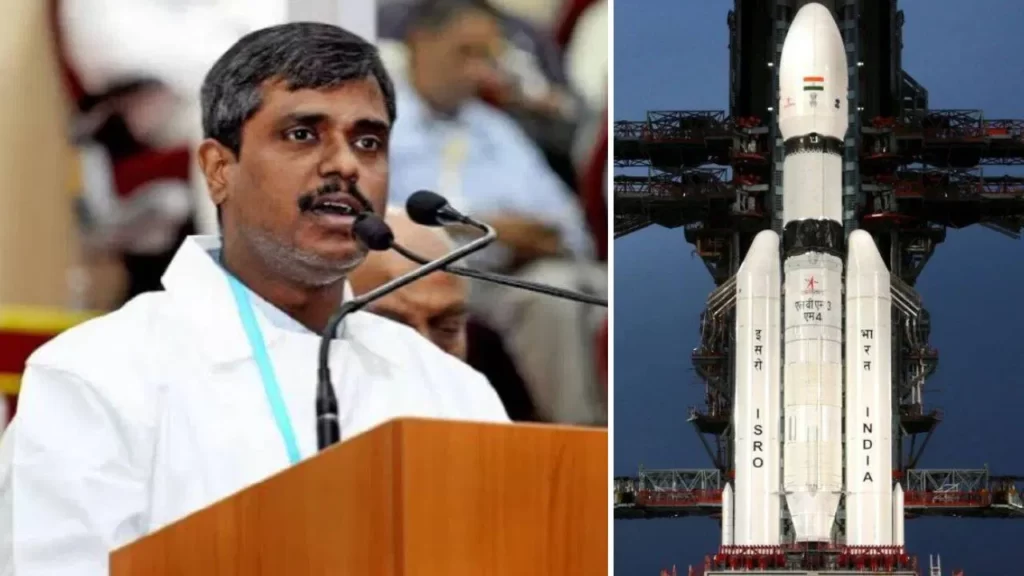
Chandrayaan 3 Team members name
As per the report, P Veeramuthuvel, will be the project director of Chandrayaan-3 , and ISRO selected most experience and best scientist for this Chandrayaan-3 mission. Now I am giving the name of all the team member of this Mission –
S Somanath :
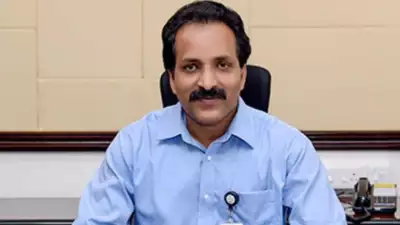
Former director of the ISRO’s primary rocket centres, the Liquid Propulsion Systems Centre (LPSC) and the Vikram Sarabhai Space Centre.
P Veeramuthuvel :

The project director and the visionary of the mission. He is a senior scientist from Villupuram, Tamil Nadu,
S Unnikrishnan Nair :
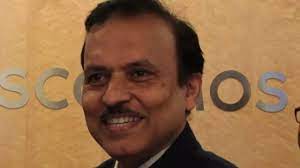
The LVM3 rocket’s designer and the chief of VSSC. He and his team are in charge of several crucial elements of the endeavour.
A Rajarajan :

Tthe head of SDSC SHAR, Sriharikota’s primary spaceport for India. He also serves as the head of LAB, which approves the launch. He has made sure that solid motors and launch infrastructure are ready for ISRO’s expanding launch needs, including Gaganyaan and SSLV, and he is an expert in composite materials.
M Sankaran :
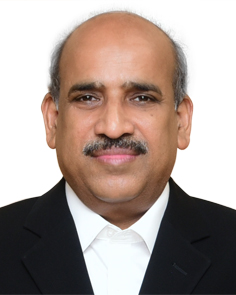
The head of URSC, India’s premier satellite design and development facility. He assumed control in June 2021 and is now in command of the satellite team, which is working to address India’s needs in terms of interplanetary exploration, remote sensing, meteorology, and communication.
Chayan Dutta :
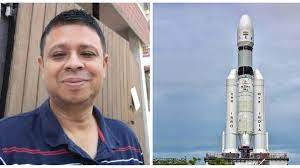
The head of the onboard command telemetry, data handling, and storage system as well as the deputy project director for Chandrayaan 3’s development. He is an Assamese scientist and engineer who will oversee Chandrayaan-3’s launch control.
Chandrayaan-3 live update
As per Isro’s report Chandrayaan-3 will land on moon by 23 August (approx) . And there is not Chandrayaan 3
Technological Progress
Comparing Chandrayaan-3 to its predecessors, various technological innovations are introduced that take into account prior missions’ lessons.
Superior Lunar Lander
Improved navigation and guidance technologies on Chandrayaan-3’s upgraded lunar lander will ensure a soft touchdown on the moon’s surface. Modern instrumentation will be included in order to collect information about the Moon’s surface, atmosphere, and other pertinent factors.
Upgraded Rover

The rover onboard Chandrayaan-3 will be an upgraded version, equipped with advanced scientific instruments and mobility systems. It will have enhanced capabilities to traverse the rugged lunar terrain, collect samples, and perform in-situ analysis. The upgraded rover will provide invaluable insights into the lunar soil composition, geology, and other geological phenomena.
Advanced Orbiter
The orbiter accompanying Chandrayaan-3 will serve as a crucial link between the lander-rover module and mission control on Earth. It will carry state-of-the-art remote sensing instruments, cameras, and spectrometers to capture high-resolution images of the lunar surface. The advanced orbiter will also facilitate communication, data transfer, and orbit mapping, enabling seamless coordination of the mission.
Chandrayaan-3 launch date and time
Chandrayaan 3 launch date and time is 14 april 2023, 2.35PM
Preparations before launch
Engineering, testing, and careful preparation are done before to launch. To assure their dependability and functionality in the hostile lunar environment, the mission’s components undergo extensive testing and integration. Chandrayaan-3 will be launched using the launch vehicle, which is normally the Geosynchronous Satellite Launch Vehicle (GSLV).
A launch and a lunar transit
When every system is prepared, the GSLV rocket launches, sending Chandrayaan-3 into orbit. In order to achieve a successful lunar insertion, the spacecraft starts its journey towards the Moon using a precisely determined route.
Lunar Landing and Operations
Upon reaching the Moon’s orbit, Chandrayaan-3 enters a series of maneuvers to prepare for landing. The lander module separates from the orbiter and descends towards the lunar surface. Advanced sensors and guidance systems guide the lander to a precise landing site, ensuring a soft touchdown. Once safely landed, the rover is deployed to explore the lunar surface, conducting experiments, collecting samples, and gathering data.
Data Collection and Analysis
Throughout its mission, Chandrayaan-3 collects an extensive range of data related to lunar topography, mineralogy, geology, and the lunar exosphere. This data is transmitted back to Earth via the orbiter for analysis and interpretation by scientists and researchers. The insights gained from this data contribute to our understanding of the Moon’s composition, geological history, and its relationship with Earth.
Collaborative Efforts
The success of Chandrayaan-3 relies on collaborative efforts between ISRO, international partners, and industry contributions.
International Collaborations
ISRO actively seeks collaborations with other space agencies and scientific institutions worldwide. Collaborations provide opportunities for sharing expertise, resources, and data. International partnerships foster scientific cooperation, enabling a broader understanding of lunar science and space exploration.
Involvement of Industry Partners
India’s space program actively involves industry partners, including aerospace companies and research organizations. Their expertise and technical capabilities contribute to the design, development, and integration of various mission components. Collaborating with the industry ensures the utilization of cutting-edge technologies and promotes the growth of the space sector in the country.
Impact and Benefits
Chandrayaan-3 is expected to have significant impact and benefits in various domains.
Scientific Discoveries
The mission’s scientific findings will deepen our understanding of the Moon’s origin, geological processes, and evolution. The data collected by Chandrayaan-3 will contribute to global lunar research and potentially unveil new insights into the formation of celestial bodies in our solar system.
Technological Advancements
Developing and deploying advanced technologies for lunar exploration pushes the boundaries of India’s space capabilities. The technological advancements made during the Chandrayaan-3 mission will have far-reaching effects, not only for future lunar missions but also
Technological Advancements
Developing and deploying advanced technologies for lunar exploration pushes the boundaries of India’s space capabilities. The technological advancements made during the Chandrayaan-3 mission will have far-reaching effects, not only for future lunar missions but also for various other space exploration endeavors. The mission will foster innovation in areas such as spacecraft design, navigation systems, robotics, and remote sensing, contributing to the growth of India’s space industry.
Inspiration and Education
Chandrayaan-3 serves as a source of inspiration for the younger generation, igniting curiosity and interest in space science and exploration. The mission showcases India’s scientific prowess and determination to explore the unknown. It encourages students and aspiring scientists to pursue careers in STEM (Science, Technology, Engineering, and Mathematics) fields, ultimately contributing to the development of the nation’s scientific and technological landscape.
Conclusion
Chandrayaan-3, India’s upcoming lunar mission, represents a significant milestone in the country’s space exploration journey. With its objectives centered around scientific discovery, technological advancements, and international collaborations, Chandrayaan-3 aims to further expand our knowledge of the Moon and pave the way for future lunar missions. The mission’s success will not only contribute to the scientific community but also inspire and educate generations to come, fostering a passion for space exploration and innovation.
Speed of Chandrayaan 3
Up to 400 metres above the ground, its communications system transmitted information about the loss of control. When it crashed, the Lander had slowed to approximately 580 km/h. Chandrayaan-3’s legs have been strengthened so that it can land and resolve itself even at a speed of 3 m/sec, or 10.8 km/h.
When will Chandrayaan 3 land on moon surface date and time
As per information of ISRO , after 40-42 days journey chandrayaan 3 will take place on 23-24 August . And one more things , the date has been decided based on the availability of sunlight on the moon.
The solar panels on the lander are unable to charge on a number of days when there is no sunshine at the south pole of the moon. If Chandrayaan 3 faced this type of issue then we have to wait for September .
Chandrayaan 3 Live Status
- Thursday, July 20 between 2:00 and 3:30 PM IST- As per ISRO , spacecraft has been completed The fourth orbit-raising maneuver successfully .
- The next firing, the spacecraft fifth and final orbit will complete on July 25, 2023, between 2:00 and 3:30 IST.
- On average, the Moon is situated 384,400 km away from Earth. Chandrayaan-3 will travel a longer path to the sole satellite of Earth in order to save fuel. With this trajectory, the mission’s Vikram lander expected to make a soft landing in the vicinity of the Moon’s South Pole 42 days after launch, or around August 23 or 24.
Chandrayaan 3 Live update
The fourth orbit-raising operation of the Chandrayaan-3 spacecraft was successfully accomplished on July 20th, according to ISRO. The space agency also confirmed the accuracy of its amended orbital parameters.
- In its most recent orbit, the spaceship will be 233 km from Earth at its closest point. and at its greatest distance, 71,351 kilometres. The following manoeuvre is planned for July 25 between 2:00 and 3:30 PM IST.
- The third orbit-raising manoeuvre, which took place on Tuesday, July 18, between 2:00 and 3:30 PM IST, was successful, said ISRO.
- At its closest approach to Earth, the spacecraft, which is currently orbiting the planet, will be 228 kilometres above it. At its farthest point, it will be 51,400 kilometres from the planet.
- On July 16, the Chandrayaan-3 spacecraft successfully carried out its second orbit-raising manoeuvre, putting it into an Earth orbit measuring 41603 km by 226 km.
- And on Saturday, July 15, 2023, the first orbit-raising manoeuvre was completed. The state of the spacecraft was also described as “normal” in tweets from ISRO.
| Sl | Description of Action | Date |
| 1 | 1st Orbit Raising Manoeuvre | 15 July 2023 |
| 2 | 2nd Orbit Raising Manoeuvre | 16 July 2023 |
| 3 | 3rd Orbit Raising Manoeuvre | 18 July 2023 |
| 4 | 4th Orbit Raising Manoeuvre | 20 July 2023 |
| 5 | 5th or Final Orbit Raising Manoeuvre | 25 July 2023 |
Chandrayaan 3 Live Tracker
The separation of the lander, a series of deboost manoeuvres, and a power descent phase for a soft landing are just a few of the critical events that the Chandrayaan-3 spacecraft has planned, according to P Veeramuthuvel, project director of the ship. But if successful, India will become the fourth country in history to carry out a soft landing on the moon, following the United States, China, and the erstwhile Soviet Union. Both the Soviet Union and the United States lost multiple spacecraft in collisions before accomplishing a successful Moon landing. China was the only nation to successfully finish the Chang’e-3 mission on its initial try.
When Chandrayaan 3 will come back to Earth
When Chandrayaan 3 will come back to earth, this is one of the most important questions for many people. But as per ISRO, They are not giving any perfect information regarding the return to Earth of Chadrayaan 3. Still, Chadrayaan 2 is working on his work successfully after the primary issue.
Chandrayaan 3 Poster –
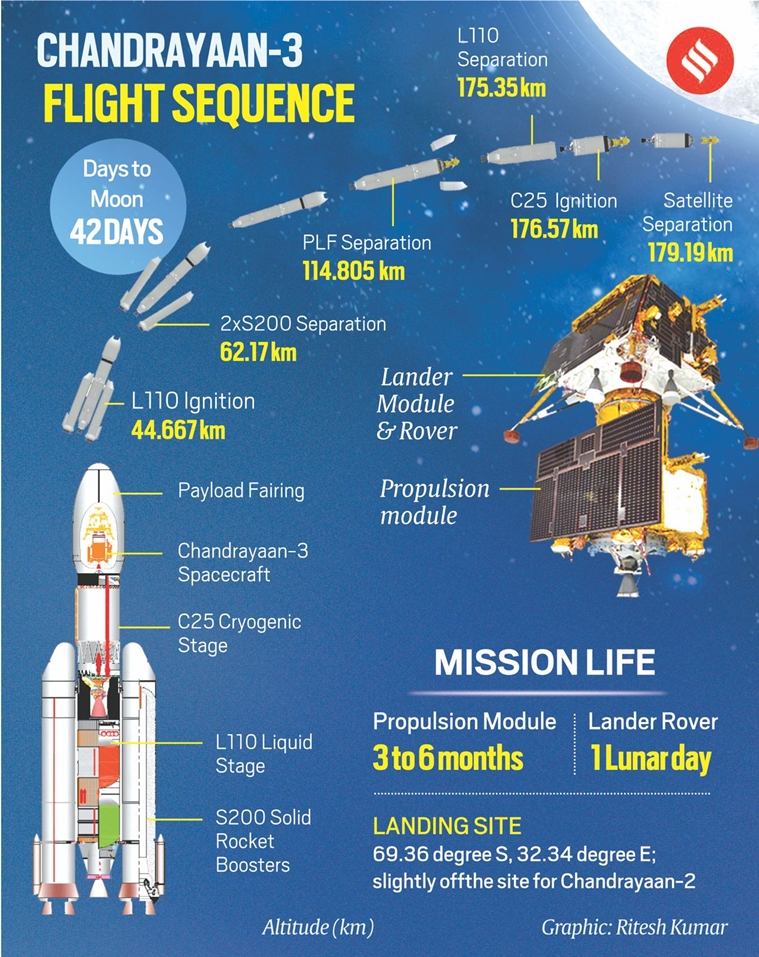
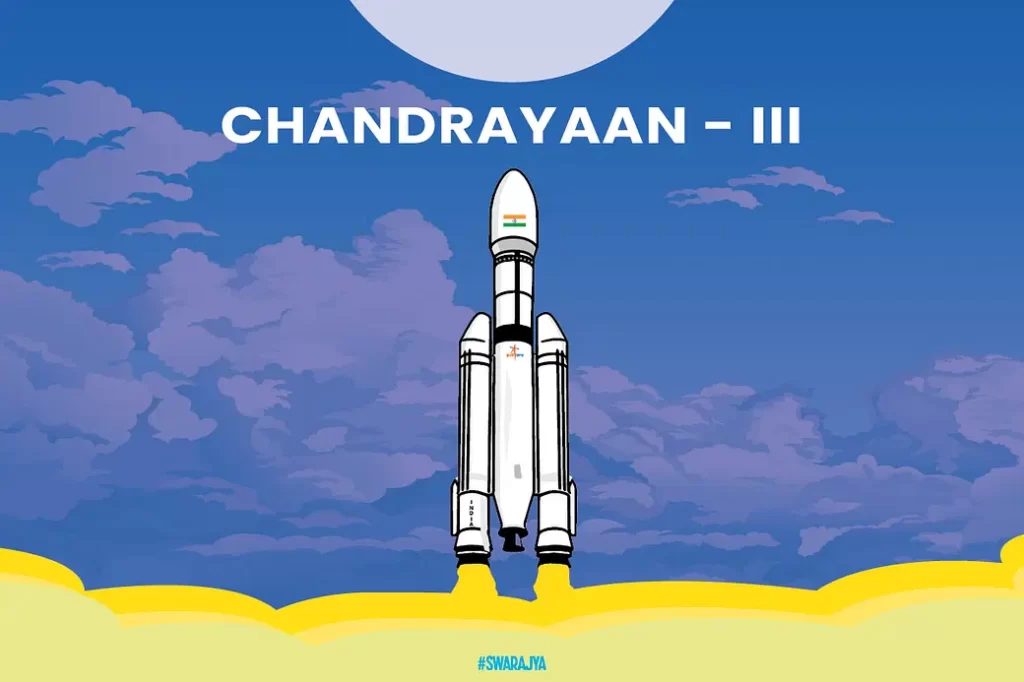
Chandrayaan-3 launch date and time?
Chandrayaan 3 launch date and time is 14 april 2023, 2.35PM
Who is Chandrayaan-3 Project Director?
As per the report, the project director of Chandrayaan-3 will be ‘SF’ P Veeramuthuvel, who will be based at the headquarters of the country’s leading space agency in Bengaluru.


